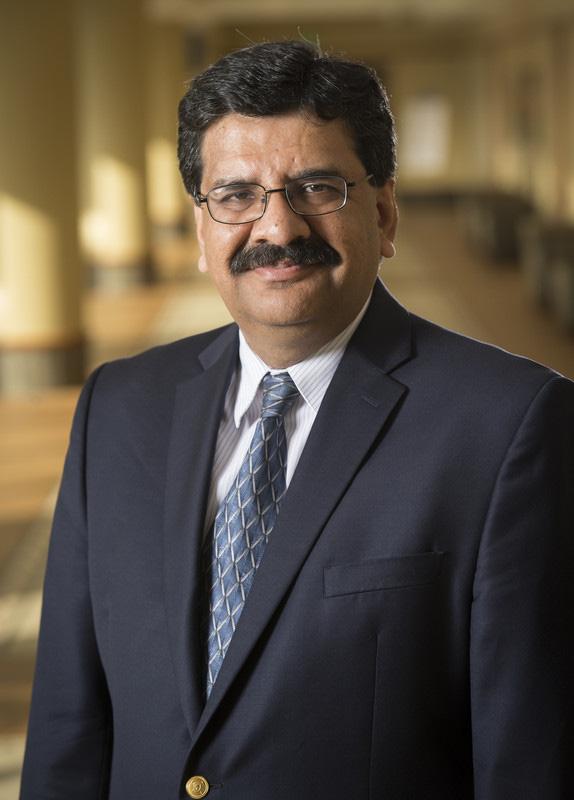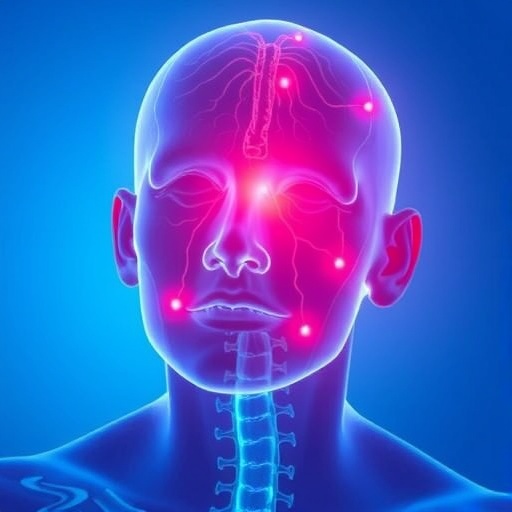This knowledge offers a strategy to target and eliminate these persistent leukemic stem cells

Credit: UAB
BIRMINGHAM, Ala. – Most patients with chronic myelogenous leukemia can be treated with tyrosine kinase inhibitors. These drugs are highly effective and lead to deep remission and prolonged survival. Yet quiescent leukemic stem cells persist in these patients, and they therefore must continue inhibitor treatment to maintain remission.
These ‘sleeper cell,’ quiescent leukemic stem cells are maintained in microenvironments in the bone marrow. The bone marrow niches are specific anatomic locations that are known to maintain normal hematopoietic stem cells, the precursors of all blood cells. However, the maintenance of leukemic stem cells in chronic myelogenous leukemia is poorly understood.
In a study published in Cell Stem Cell, Ravi Bhatia, M.D., and colleagues at the University of Alabama at Birmingham, University of Zurich and Osaka University describe how niche-specific expression of a particular chemokine by a particular type of bone marrow cell controls quiescence of these treatment-resistant leukemic stem cells. The chemokine is CXCL12, and the particular bone marrow cells expressing it are mesenchymal stromal cells. Mesenchymal stromal cells are already known to help support normal stem cells.
“The persistence of dormant, primitive leukemic stem cells in patients receiving tyrosine kinase inhibitor treatment is a major barrier to a cure in chronic myelogenous leukemia,” Bhatia said. “This work identifies the specific mesenchymal stromal cell niche cells that are responsible for maintaining leukemic stem cells in a quiescent and treatment-resistant state, and indicates that targeting these niche interactions can activate leukemia stem cells, make them sensitive to treatment and enhance their elimination.”
At UAB, Bhatia is a professor of medicine, director of the Division of Hematology and Oncology, and deputy director of the O’Neal Comprehensive Cancer Center at UAB.
CXCL12 is expressed in bone marrow niches and controls hematopoietic stem cell maintenance. There are four types of cells in bone marrow known to abundantly produce CXCL12. In mouse experiments, Bhatia and colleagues were able to produce targeted deletions of the gene for CXCL12 in each cell type, and then ask how each deletion affected leukemic stem cell regulation.
They found that deleting CXCL12 from mesenchymal stromal cells, but not from the other three CXCL12-expressing bone marrow microenvironment cell types, enhanced leukemia development and reduced survival of the mice. These results were related to increased cell cycling and expansion of the chronic myelogenous leukemia stem cells. However, the cycling leukemia stem cells became sensitive to tyrosine kinase treatment, resulting in their increased elimination.
Bone marrow imaging studies revealed that stromal cells reorganized to co-localize with leukemia stem cells in discrete regions in the bone marrow. These regions of co-localized mesenchymal stromal cells and leukemia stem cells were lost upon CXCL12 deletion, further supporting the importance of CXCL12 expression in maintaining leukemia stem cell niches.
“These results therefore reveal that CXCL12-expressing mesenchymal stromal cells function as specific regulatory niches that maintain quiescent, treatment-resistant leukemic stem cells in the bone marrow,” Bhatia said.
In contrast to mesenchymal stromal cells, loss of CXCL12 expression in endothelial cells of the bone marrow microenvironment resulted in reduction of chronic myelogenous leukemic stem cell numbers, and it extended the survival rates for the mice. This suggests that CXCL12-expressing endothelial cell niches help to maintain leukemia stem cells.
Thus, niches with mesenchymal stromal cells and endothelial cells that express CXCL12 have markedly different regulatory effects on the leukemic stem cells.
###
Co-authors with Ravi Bhatia of the study, “Mesenchymal niche-specific expression of Cxcl12 controls quiescence of treatment-resistant leukemia stem cells,” are Puneet Agarwal, Hui Li, Andrew J. Paterson and Jianbo He, Division of Hematology and Oncology, UAB Department of Medicine; Stephan Isringhausen, Álvaro Gomariz and César Nombela-Arrieta, Department of Hematology and Oncology, University Hospital and University of Zurich, Switzerland; and Takashi Nagasawa, Graduate School of Frontier Biosciences, Osaka University, Japan.
Support came from National Institutes of Health grants CA172447 and CA033572.
Media Contact
Jeff Hansen
[email protected]
Original Source
https:/
Related Journal Article
http://dx.




